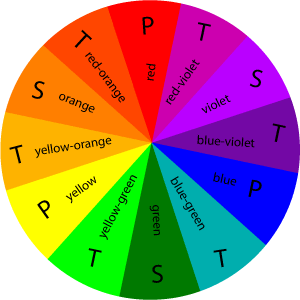Let's start off with the color wheel and what it entails.
The color wheel is based off firstly the primary colors, these are the colors that cannot be made by the other colors.
Red Blue Yellow
From these colors you can actually make all the other colors except white. While technically white is a mixture of all the colors scientifically, artistically it just comes out as a mess of blackish stuff if you mix all your paint together.
From the primary colors the secondary colors are born.
Green Orange Purple
From the primary and secondary colors come the tertiary colors.
Yellow-orange Red-orange Red-purple Blue-purple Blue-green Yellow-green
Then from these the colors keep expanding with different hues (shades of darkness and lightness). Though with the primary, secondary, tertiary this one of the basic colors wheels.

Color Wheel from http://webdesignsolutions.com/n-4205-color-theory-in-web-design-does-it-matter.html
Going more in-depth into color wheels could take books and quite a bit of controversy would be involved as well. While the basic colors and wheel is not argued, how the wheel is arranged and what is exactly called what has always been debated. There are many different types of wheels that accommodate all the differing opinions. From expanded hues to different shapes and color relationships there are plenty of different wheels to find any color. Though even now artists and scientist do research the possibilities of colors and how the colors communicate with each other.
I'll continue more into color theory and the actual relationships between colors themselves and the relationships between us and colors in Color Theory 2.
No comments:
Post a Comment